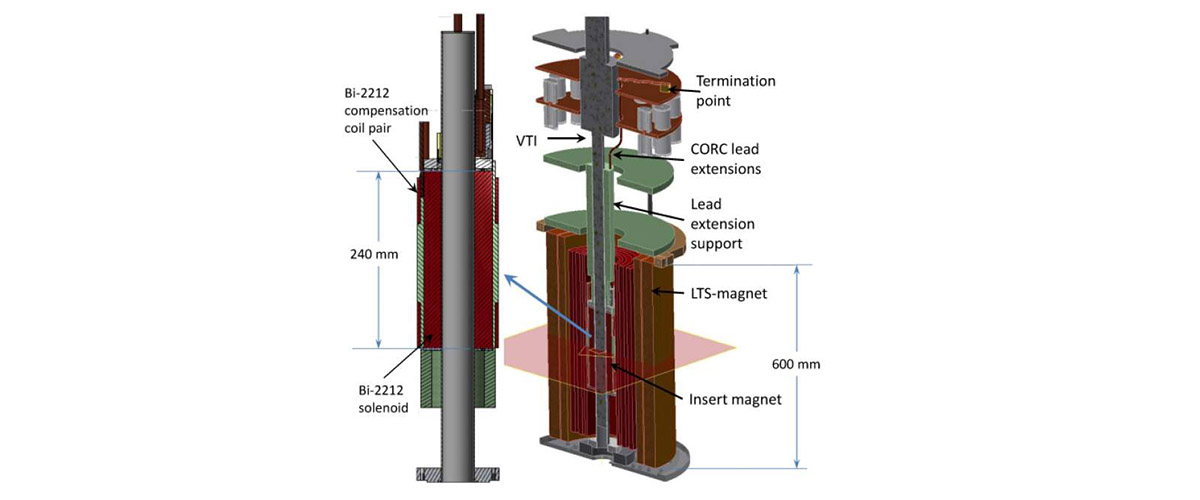The goal of this project is to make a layer wound insert magnet using Bi2Sr2CaCu2O8-x (Bi-2212, or BSCCO) round wire targeting a magnetic field of around 24 T (tesla, [T = Vs/m2]) at ppm-level homogeneity and stability. Bi-2212 is a high-temperature superconductor that breaches the physical limitations of Nb-based LTS superconductors (Nb3Sn (niobium tin) and Nb-Ti (niobium titanium) by retaining its superconducting properties at much higher magnetic fields. It is also unique amongst any HTS conductor in being round, multifilament and twisted, thus making it especially suitable for high homogeneity magnets. The Platypus project, which is led by the Applied Superconductivity Center (ASC) in collaboration with the lab’s NMR-MRI/S and MS&T groups, will test its applicability for very high homogeneity, high field magnets.
A peculiarity of magnets made with Bi-2212 conductors is that they must first be wound in the non-superconducting state and then reacted into the superconducting state (wind-and-react approach) at up to 890 degrees Celsius. A key to achieve the highest possible transport current density is to heat treat the Bi-2212 conductor at overpressures of up to 100 bar in a gas mixture of argon and oxygen. This process, which was developed at ASC, will be applied to this magnet [1]. Recently, the MagLab purchased a large overpressure furnace that provides a homogeneous hot zone of 17 cm dia and 50 cm height that will accommodate this and several future coils made with Bi-2212 round wire. The layer-wound Platypus coil will use about 800 m of conductor made by Oxford Superconducting Technology and will be nested inside a 17 T Oxford Instruments LTS magnet to generate a combined field of around 24 T.
To allow for a first order correction of the field profile, the magnet will be equipped with a pair of compensation coils. Initially a nuclear magnetic resonance (NMR) field mapper will be used to determine the field profile inside the magnet and later an NMR probe will be used to measure NMR signals.
This project is a first step toward developing the kind of all-superconducting, very high-field (30 T and above) NMR magnet envisaged by the recent National Academy report [2]. It requires an insert coil made of a high-temperature superconductor since no Nb3Sn can generate more than about 23 T. NMR magnets are an important tool in health-related research, including pharmaceutical chemistry, biochemistry and in-cell, preclinical and human studies. No single factor has enhanced the scope and performance of NMR experiments as much as increasing the magnetic field strength.
Under the Platypus umbrella, the MagLab will also build a second insert magnet in collaboration with RIKEN, Japan's largest comprehensive research institution renowned for high-quality research in a diverse range of scientific disciplines. This insert will be operated inside a 400 MHz NMR magnet system and it too will be layer-wound using Bi-2212 round wire.
[1] D.C. Larbalestier et al., Nature Materials, 13(4) (2014) 375–381.
[2] High Magnetic Field Science and its Application in the United States, National Academies Press 2013.
For more information contact Ulf Trociewitz.



